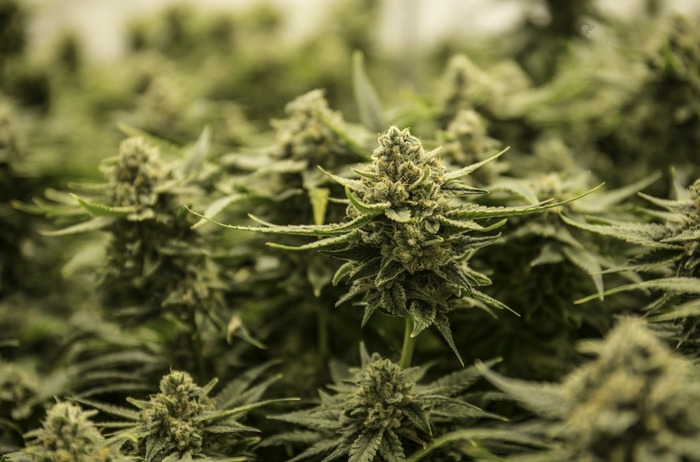

Cannabis cultivation has become increasingly popular over the years, as the plant has gained acceptance for both medical and recreational purposes in many parts of the world. As a result, there has been a surge in demand for high-quality cannabis products, which has led to a growing interest in the most effective and efficient methods for growing cannabis.
There are two main methods for growing cannabis: indoor and outdoor. Indoor cannabis growing involves using artificial lighting, ventilation systems, and climate control to create a controlled environment for the plants. On the other hand, outdoor cannabis growing relies on natural sunlight and the local climate to cultivate the plants.
While both methods have their advantages and disadvantages, there is no clear-cut answer to which is the best method for growing cannabis. The choice of method ultimately depends on various factors, such as cost, yield, quality, legal restrictions, and personal preference. In this article, we will explore the pros and cons of each method and compare indoor vs outdoor cannabis yield to help you make an informed decision on which method is best for your needs.
Contents


Indoor Cannabis Growing
Indoor cannabis growing involves cultivating cannabis plants within an indoor environment that is fully controlled, from the temperature and humidity to the lighting and nutrients. This method requires specific equipment, such as grow tents, grow lights, and ventilation systems, to create an optimal growing environment.
There are several pros of indoor cannabis growing, including:
- Control over environmental factors: Indoor growers have full control over the growing conditions of their plants. This allows for precise regulation of temperature, humidity, and light, which can lead to better plant growth and higher yields.
- Higher yield potential: Indoor growers can achieve higher yields than outdoor growers because they can provide optimal growing conditions year-round. Additionally, indoor growers can control the amount of light the plants receive, allowing for multiple harvests per year.
- Ability to grow year-round: Indoor growing allows for year-round cultivation, regardless of the weather conditions outside.
Despite the advantages, indoor cannabis growing has some drawbacks, including:
- Higher costs: Setting up an indoor grow operation can be expensive due to the equipment needed to create a controlled environment. Grow lights, ventilation systems, and other equipment can add up quickly.
- More intensive labor: Indoor cannabis growing requires more hands-on labor, such as daily watering and monitoring of environmental conditions. This can be time-consuming and require a higher level of expertise.
- Greater energy consumption: Indoor grow operations consume a lot of electricity due to the need for artificial lighting and ventilation systems. This can lead to higher utility bills and a larger carbon footprint.
Overall, indoor cannabis growing can be a highly effective method for growing cannabis. However, it requires a significant investment of time and money, making it more suitable for experienced growers with a larger budget.


Outdoor Cannabis Growing
Outdoor cannabis growing involves cultivating cannabis plants outside, using natural sunlight and the local climate to provide the plants with the necessary nutrients and growing conditions. This method requires finding an appropriate location with suitable soil and climate conditions.
There are several advantages to outdoor cannabis growing, including:
- Lower costs: Outdoor cannabis growing requires less equipment and energy consumption, making it a more affordable option for many growers.
- Natural sunlight: Cannabis plants grown outdoors receive natural sunlight, which provides a full spectrum of light that can lead to better plant growth and higher THC levels.
- Bigger plant size: Outdoor cannabis plants can grow much larger than their indoor counterparts due to the availability of natural light and unlimited space.
- More sustainable: Outdoor cannabis growing is a more environmentally sustainable option than indoor growing, as it does not require excessive energy consumption.
However, there are also some drawbacks to outdoor cannabis growing, including:
- Lack of control over environmental factors: Outdoor growers have little control over the growing conditions of their plants, such as temperature and humidity. This can lead to lower-quality plants and yields.
- Weather-related risks: Outdoor cannabis growing is subject to weather-related hazards, such as drought, flooding, and extreme temperature changes. These risks can result in lower yields or even crop failure.
- Seasonal limitation: Outdoor cannabis growing is limited by the growing season, with plants typically being ready for harvest in the fall. This can limit the number of harvests per year.
Overall, outdoor cannabis growing can be a great option for those who have access to a suitable growing location and want to keep costs low. While outdoor growing has some limitations and risks, it can produce high-quality cannabis plants with a lower environmental impact.
Comparison of Indoor and Outdoor Cannabis Yield
Yield is a critical factor in cannabis cultivation, as it directly impacts the profitability and success of the grow operation. Yield is typically measured in grams per square foot of grow space.
When comparing indoor and outdoor cannabis yield, indoor cultivation tends to produce higher yields per square foot than outdoor cultivation. The average yield per square foot for indoor cannabis cultivation is around 1-1.5 pounds, while the average yield for outdoor cannabis cultivation is around 0.5-1 pound per square foot.
Several factors can affect indoor and outdoor cannabis yield, including:
- Lighting: Indoor growers can control the amount and quality of light their plants receive, while outdoor growers are limited by natural sunlight. High-quality grow lights can significantly increase indoor yields.
- Temperature and humidity: Indoor growers can control the temperature and humidity of their grow space, while outdoor growers are at the mercy of the local climate. Temperature and humidity levels can significantly impact plant growth and yield.
- Soil and nutrients: Outdoor growers need to ensure that their plants have access to adequate nutrients and soil quality. Indoor growers can control the soil and nutrient levels in their grow space, leading to higher yields.
- Pests and disease: Both indoor and outdoor growers need to protect their plants from pests and diseases, which can significantly impact yield.
Despite the lower average yield per square foot for outdoor cannabis cultivation, outdoor growers can compensate by growing larger plants and increasing their overall yield. Additionally, outdoor cultivation is typically more sustainable and affordable than indoor cultivation, making it an attractive option for many growers.
Ultimately, the best method for growing cannabis depends on the specific needs and goals of the grow operation. Indoor cultivation offers greater control over environmental factors and higher yields per square foot, while outdoor cultivation offers more sustainable and affordable options with larger plant sizes.
Other Factors to Consider When Choosing a Growing Method
While yield is an essential factor when choosing a cannabis growing method, several other factors should be considered. These factors include cost, quality, and legal restrictions.
- Cost: The cost of growing cannabis can vary significantly between indoor and outdoor cultivation methods. Indoor cultivation requires significant investment in equipment, electricity, water, and nutrients. However, outdoor cultivation can also be costly, with expenses related to site preparation, soil amendment, and water management.
- Quality: The growing method can also impact the quality of the cannabis, such as its flavor, aroma, and potency. Indoor growers can control environmental factors such as temperature, humidity, and lighting, leading to consistent and high-quality cannabis. However, outdoor-grown cannabis may have a more complex flavor and aroma profile due to the natural environmental conditions.
- Legal restrictions: Cannabis cultivation is subject to various regulations and laws, which may limit or dictate the growing method in certain regions. For example, some jurisdictions may require cannabis to be grown indoors to comply with security and odor-control regulations. Other regions may have restrictions on outdoor cultivation due to concerns about environmental impact and public safety.
When choosing a growing method, it is essential to consider all of these factors carefully. Growers should weigh each method’s costs, quality, and legal considerations to determine the best fit for their specific needs and goals.
final thought
In conclusion, choosing the best method for growing cannabis requires careful consideration of several factors, including yield, cost, quality, and legal restrictions. While indoor cannabis growing offers greater control over environmental factors and higher yield potential, it also requires higher costs and more intensive labor. Outdoor cultivation, on the other hand, offers lower costs, natural sunlight, and a more sustainable approach, but can be limited by seasonal changes and a lack of control over environmental factors.
Ultimately, the best method for growing cannabis depends on individual circumstances and goals. It is important to weigh the pros and cons of each method, consider personal preferences and limitations, and experiment with different growing techniques to determine the optimal fit.
As the cannabis industry continues to expand, growers should stay informed of the latest research and technological advancements to improve their cultivation practices. Whether choosing indoor or outdoor methods, there is always room for experimentation and improvement in the pursuit of high-quality, sustainable cannabis cultivation.






